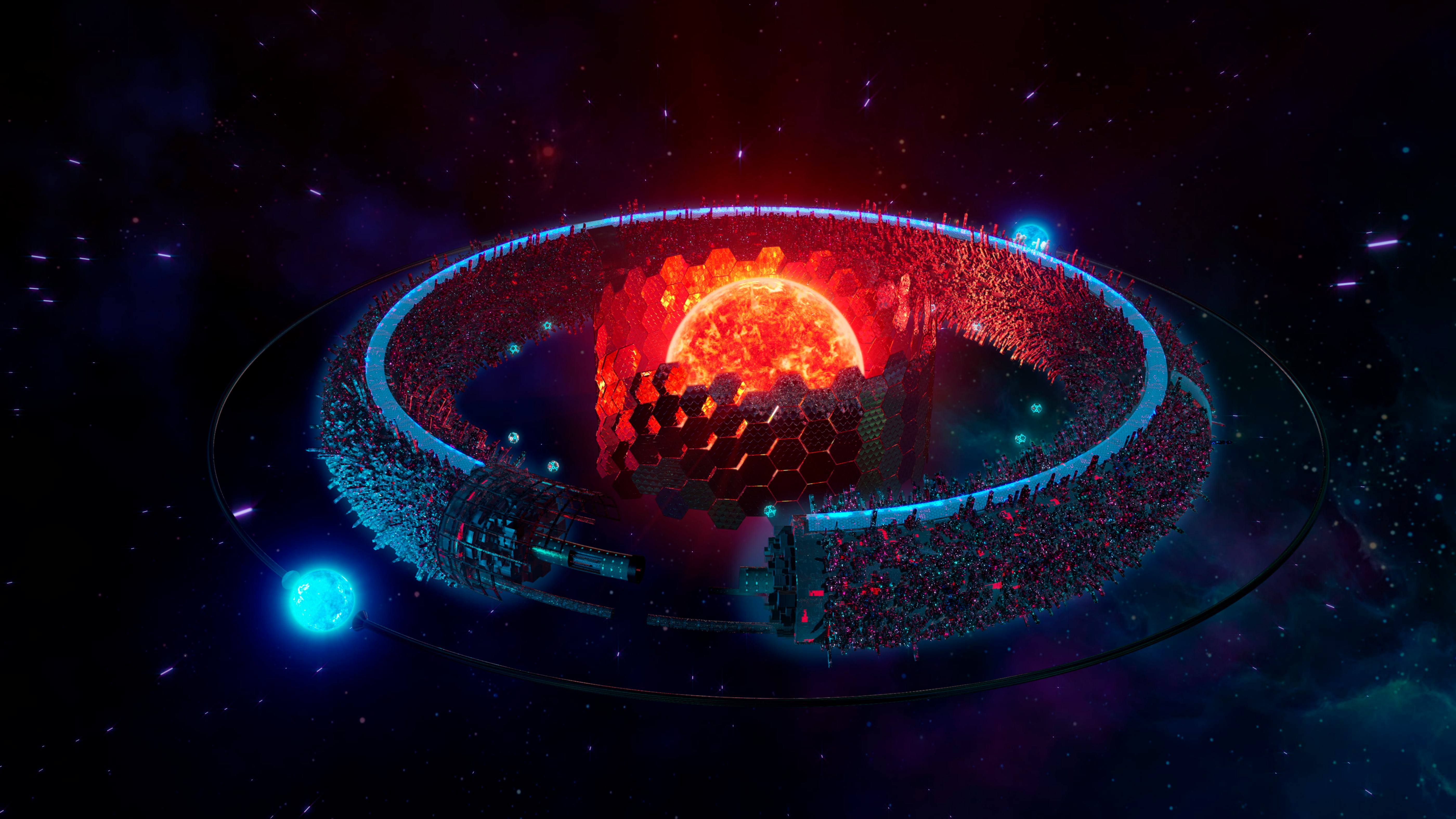
Science fiction has had a field day with the idea that technologically advanced aliens might build a Dyson Sphere — a star-system-sized megastructure that encloses a whole star — or something similar, to capture as much of their star’s energy as possible.
But why build a giant sphere around your star when you could just move a few — or two dozen — extra planets into the habitable zone? In a recent study, which used computer simulations to explore how many planets could orbit at the same distance from a star, University of Bordeaux astronomer Sean Raymond and his colleagues suggest it’s possible. Astronomers might even be able to spot it happening.
They published their work in the Monthly Notices of the Royal Astronomical Society.
Horseshoes and Habitable Worlds
To understand what Raymond and his colleagues figured out, we need to stop by Saturn, where two moons called Janus and Epimetheus are doing a strange orbital dance. The two moons are technically in the same orbit around Saturn. One moon orbits about 31 miles closer to the gas giant than the other — think of it as driving in the inside lane. And they take turns.
Here’s how that works. Just like race cars going around a track, the moon in the inside lane travels faster, and every four years or so, it passes its slightly slower companion. But — not at all like cars on a racetrack — when that happens, the two moons give each other a gravitational nudge that causes them to swap lanes. So if Epimetheus was zipping along on the inside lane, it starts to pass Janus, and gravity nudges Epimetheus to the outside lane and Janus to the inside. Four years later, it’s Janus’s turn to pass.

Astronomers call this a “horseshoe orbit,” because if you’re watching from either moon, it looks like the other is approaching you, turning around, circling back the way it came, and then approaching from the other side, in a big U-shape.
And the thing about orbital dynamics is that if moons can do it, planets can usually do it, too. We don’t have any horseshoe-orbiting planet pairs in our own Solar System, but there’s plenty of reason to think it should happen elsewhere.
“A two-planet horseshoe system can form in nature,” Raymond tells Inverse. "It happens once in a while in our simulations of planet formation."
But astronomers have never found a system with two or more planets in horseshoe orbits, either in simulations or in real life. This means if astronomers ever do see such a thing, it could be evidence of intelligent alien life — with enough clout to move whole planets around.
“I think it's pretty reasonable to say that any horseshoe system with three or more planets would be an excellent target in the search for life outside the Solar System,” says Raymond, although he acknowledges that it’s not a sure thing, “since we still have plenty to learn about how planets form.”
One Heck of a Construction Project
Raymond and his colleagues used a computer simulation to study the dynamics of up to 24 planets in the same orbit around a star, with pairs of next-door neighbors in “horseshoe orbits” relative to each other.
The result is complicated (you would really not want to be responsible for the math involved in, say, planning a flight from one planet to another) but surprisingly stable. In Raymond and his colleagues’ simulation, the 24 planets maintained their complex dance for billions of years, even after their simulated star finished burning up its hydrogen fuel and swelled outward, which our own Sun will do in about five billion years.
In other words, if you’re the kind of alien culture with the technology and the budget to literally move planets around, and you have a few rocky Earth-mass worlds available, it might be worth the effort to install more habitable worlds in your star system. After all, what’s the worst that could happen?
Life on an Earth-sized planet in a horseshoe orbit with its neighbor would be a lot like life on Earth (aside from the part where your society is, or once was, high-tech enough to move planets around the way some people rearrange furniture, anyway). But every so often, when your neighbor made its closest approach, it would loom about as large as the full Moon in the sky before slowly receding again. That’s got to be pretty cool.
Another Way to Look for Aliens
Another thing the computer simulations revealed is how such a complicated system of horseshoe-ing planets might look to astronomers here on Earth. By carefully observing the timing of planets crossing in front of a distant star, astronomers should be able to figure out that they’re seeing several planets on horseshoe orbits, not just a single planet with weird timing.
“The first step would just be to find two (or more) planets that share the same orbit,” says Raymond. “That could be done most easily with the transit technique. The suspicion of a horseshoe system would come from seeing many transits, and figuring out that the relative timing of the transits of different planets were shifting, even though the planets all seemed to be on almost exactly the same orbit.”
That process could take about a decade of observations, according to Raymond, but it’s likely to be worth the time and effort in the end.
“Any horseshoe system is either non-natural or a spectacularly cool outcome of planet formation,” says Raymond. “Either way, it's super interesting.”







